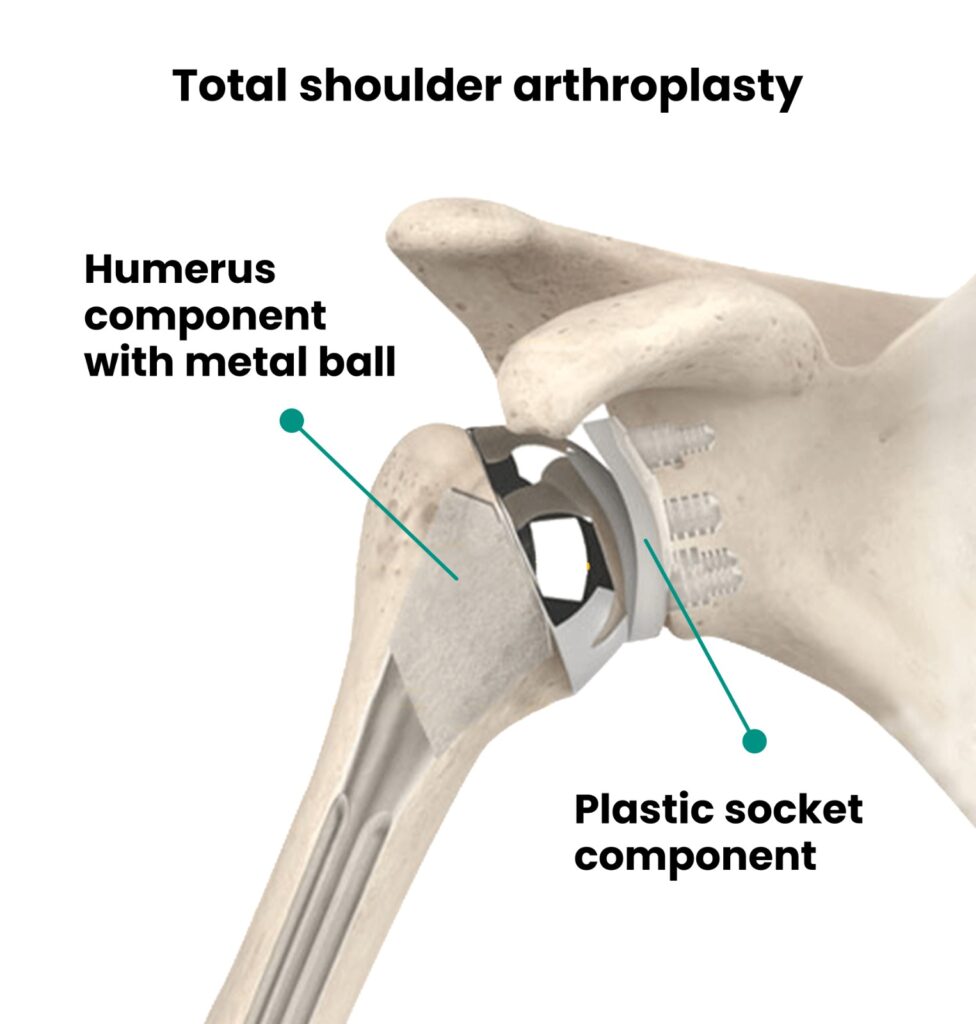Shoulder Arthroscopy
What is shoulder arthroscopy?
Shoulder arthroscopy is a minimally invasive surgical procedure that allows surgeons to visualize, diagnose, various shoulder joint problems. Through tiny incisions, a small camera called (arthroscope) is inserted into the shoulder joint, allowing real-time images to guide the surgeon in repairing damaged tissue without the need for larger surgery . This technique is commonly used for treating issues.

Conditions Treated by Shoulder Arthroscopy
Some of the common conditions that may require arthroscopy include
Symptoms Indicating the Need for Arthroscopy
- Chronic shoulder pain that persists despite physical therapy, medication, or injections.
- Loss of shoulder function, including the inability to lift the arm or perform daily activities without discomfort.
- Recurrent dislocations or instability that prevents the shoulder from staying in place.
- Shoulder joint weakness, stiffness, or “locking”
- Clicking, popping, sounds during shoulder movement.
- Limited range of motion that impacts work or shoulder performance.
Causes
- Trauma or Injury: Direct impact, falls, or accidents can cause structural damage to the shoulder, such as labral tears or rotator cuff injuries.
- Repetitive Use: Activities that involve repetitive overhead movements, such as swimming, tennis, or heavy lifting, can contribute to conditions like rotator cuff tears or impingement syndrome.
- Aging: As the body ages, tissues can weaken, become more prone to tears, or develop conditions like arthritis or bone spurs.
- Previous Shoulder Injuries: Prior injuries, including dislocations or fractures, can increase the risk of further joint damage or instability.
Diagnosis
Before recommending shoulder arthroscopy, our team of specialists will conduct a comprehensive evaluation, including
- Medical History: Understanding the patient’s symptoms, past injuries, and any relevant medical conditions.
- Physical Examination: Assessing shoulder strength, flexibility, and range of motion, along with checking for signs of instability, pain, or weakness.
- Imaging Studies: X-rays are used to examine bone structures and rule out fractures or arthritis, while MRIs or CT scans provide detailed images of soft tissues (tendons, ligaments, cartilage) to identify tears or inflammation.
Post-Operative Care and Recovery
After shoulder arthroscopy, the recovery process is typically faster and less painful than traditional open surgery, but still requires careful management to ensure full recovery
Immobilization: Depending on the technique, a brace or sling may be prescribed to support the shoulder during the initial days or weeks following surgery.
- Physical Therapy: Rehabilitation is key to regaining shoulder strength and flexibility. A customized therapy program will begin shortly after surgery to help restore full function.
- Pain Management: Medications and cold therapy are typically recommended to manage discomfort during the healing process.
- Follow-Up Care: Regular follow-up visits will allow your surgeon to monitor progress, assess the healing of repairs, and adjust the treatment plan as needed.


